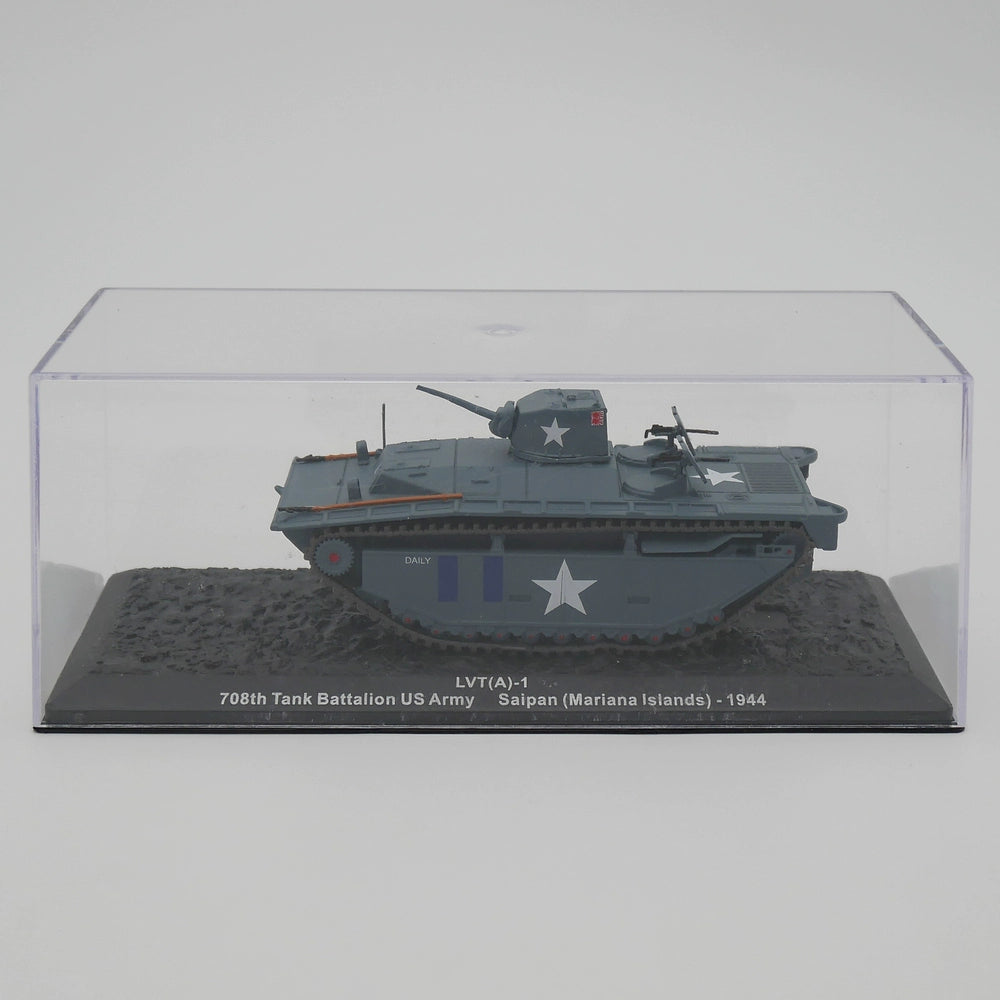old boy hobby
1/72 Scale 1944 WWII US LVT(A)-1 Amphibious Landing Vehicle Tracked Diecast Model
1/72 Scale 1944 WWII US LVT(A)-1 Amphibious Landing Vehicle Tracked Diecast Model
Couldn't load pickup availability
- diecast and pre-painted, ready to display
- material: metal & plastic
- scale: 1/72
The Amphibious Vehicle, Tracked (LVT) is an amphibious warfare vehicle and amphibious landing craft, introduced by the United States Navy and United States Marine Corps. (The USN and USMC use "L" to designate Amphibious vessels, also called "L class".) The United States Army, Canadian Army and British Army used several LVT models during World War II, and referred to those vehicles as "Landing Vehicle, Tracked."
Originally intended solely as cargo carriers for ship to shore operations, they evolved into assault troop and fire support vehicles. The types were known as amphtrack, "amtrak", "amtrac", etc. (portmanteaus of "amphibious tractor"), and "alligator" or "gator".
The LVT(A) Mark 1 was the first infantry support LVT. With the first experience of Pacific amphibious operations it was clear heavier firepower than the usual .50 in guns was needed. Based on the LVT-2, A standing for 'armored', this fire support version had a hull with 12 mm (0.47 in) plate on the bow, cab and turret and 6 mm (0.24 in) of armor elsewhere. It was fitted with a turret nearly identical to that of the Light Tank M3, with a 37 mm Gun M6 in an M44 mount and coaxial 0,30-inch machine gun. Two more 0.30-inch machine guns on ring mounts on the rear deck behind the turret, 509 units were produced. It was powered by a 262 bhp (195 kW) air-cooled petrol engine. Due to the limitations imposed by the turret, it could carry only a limited payload of 1,000 lb (450 kg) of but maintained the same speed of 25 mph (40 km/h) on land and 5.4 kn (6.2 mph; 10.0 km/h) in water of the Mark 2, with an operational endurance of 125 mi (200 km) on land or 75 mi (120 km) in water.
These vehicles were intended to provide fire support to the assaulting Marines in the early stages of establishing a beachhead. It was common, however, for the LVT(A)s to commence firing whilst still in the water.
At Roi-Namur, the 24th Marines had support of LVT(A)-1s, but they could not close up enough to effectively support the troops from the beaches. Other LVT(A)-1s supported the 22nd Marines landing at Engebi. By mid-1944, all LVT(A)-1s had been replaced by much more capable 75mm gun armed LVT(A)-4s. This switch was primarily due to the LVT(A)-1 M6 gun lacking adequate bunker busting capabilities. The inability to neutralize bunkers on or near the beachheads was an inherent risk for Marines storming out of their landing craft.
--copied from Wikipedia
Share














